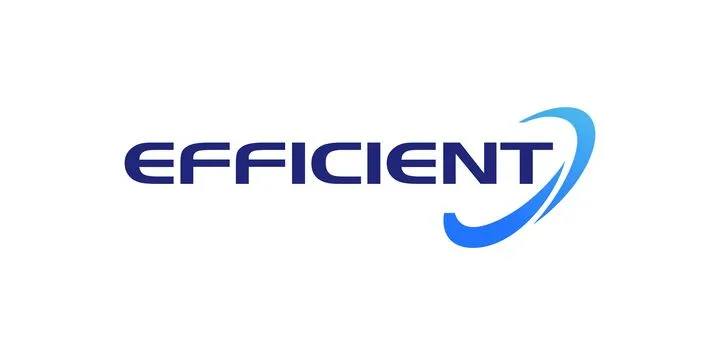PET مختلط مع PP/PE؟ استخدام خزان فصل الغمر والطفو
يُعتبر PET من أكثر البلاستيكات المعاد تدويرها على نطاق واسع، حيث يُعاد استخدامه في منتجات مثل التعبئة والتغليف، والأشرطة، وألياف البوليستر. ومع ذلك، غالبًا ما يتم خلط رقائق rPET مع أغطية PP/PE وملصقات PVC، مما يقلل من قيمتها عند إعادة البيع ويجعل الفرز اليدوي غير عملي.
لمواجهة هذا التحدي، طورت شركة EFFICIENT Machinery خزان فصل الطفو بالغمر الذي يفصل وينظف رقائق PET بكفاءة، مما يحسن نقاء إعادة التدوير وكفاءة المصنع.
لماذا يعتبر فصل PET و PP/PE صعبًا جدًا؟
في سوق البلاستيك المعاد تدويره، تؤثر نقاء ولون الراتنج المعاد تدويره (rPET) على إعادة استخدامه وقيمته الاقتصادية، من بين أمور أخرى. لذلك، فإن تحسين نقاء PET أمر بالغ الأهمية. أولاً، يجب أن نفهم التحديات التي نواجهها من أجل التغلب عليها.
1. المظهر المتشابه يجعل الفرز اليدوي صعبًا.
تُشبه زجاجات PET عن كثب أغطية PP/PE وملصقات PVC من حيث اللون والشكل، مما يجعل من الصعب تمييزها بدقة من خلال الفرز اليدوي أو البصري. هذه المشكلة تكون خاصة في خطوط إعادة التدوير الكبيرة بسبب انخفاض الكفاءة وارتفاع معدلات الخطأ.
2. الاختلاف الطفيف في الكثافة يتطلب معدات فصل دقيقة.
كثافة PET حوالي 1.35 جرام/سم³، بينما كثافة PP و PE أقل من 1.0 جرام/سم³. على الرغم من أنه يمكن فصلها بواسطة خزان فصل الغمر في النظرية، إلا أن العملية الفعلية تتطلب استقرارًا عاليًا للغاية في تدفق المياه، ووقت الإقامة، والتحكم في التدفق المضطرب.
3. بقايا لاصق الملصق تؤثر على عملية الفصل.
تغير المواد اللاصقة المتبقية وغيرها من الرواسب من طفو الحطام البلاستيكي، مما يؤثر على الغمر ويؤدي إلى فصل غير كامل.
4. التلوث المتبادل يقلل من جودة إعادة التدوير.
حتى كمية صغيرة من PP / PE مختلطة في رقائق زجاجات PET يمكن أن تؤثر بشكل خطير على جودة المواد المعاد تدويرها. وهذا يؤدي إلى نقطة انصهار غير متساوية وانخفاض في الخصائص الفيزيائية، مما يعني أن الجسيمات المعاد تدويرها لا يمكن أن تلبي معايير الإنتاج الغذائية أو عالية الجودة.
5. ارتفاع تكلفة المياه والكهرباء
استخدام خزان الماء التقليدي غير فعال ويستهلك الكثير من الماء والكهرباء. تكاليف الفصل والتنظيف مرتفعة.
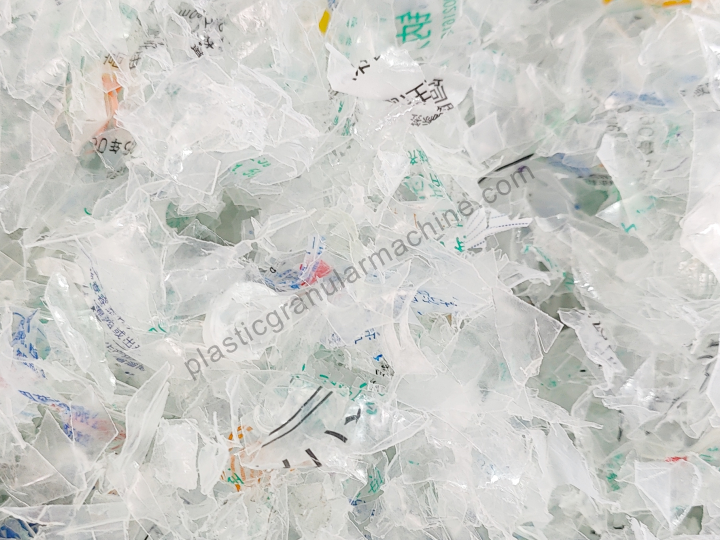
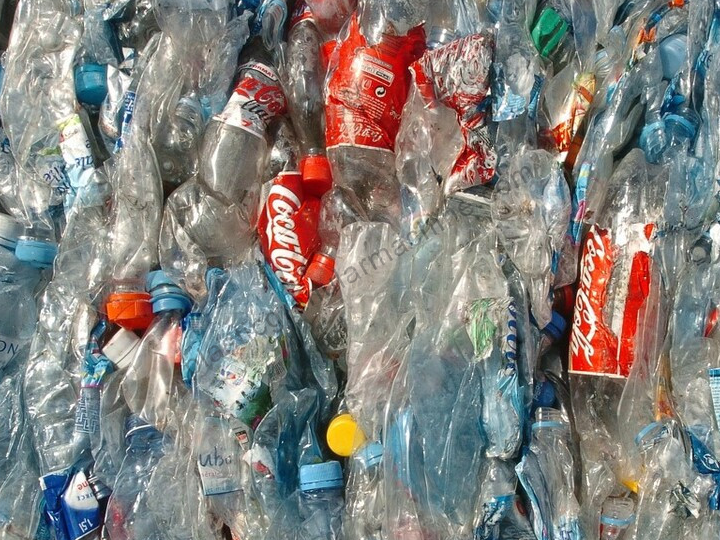
كيف نفصل بدقة؟ خزان فصل الغمر والطفو
استجابة للمشاكل المذكورة أعلاه، طور فريقنا المحترف أحدث خزان فصل الطفو بالغمر لإعادة تدوير PET. يتميز بالميزات التالية:
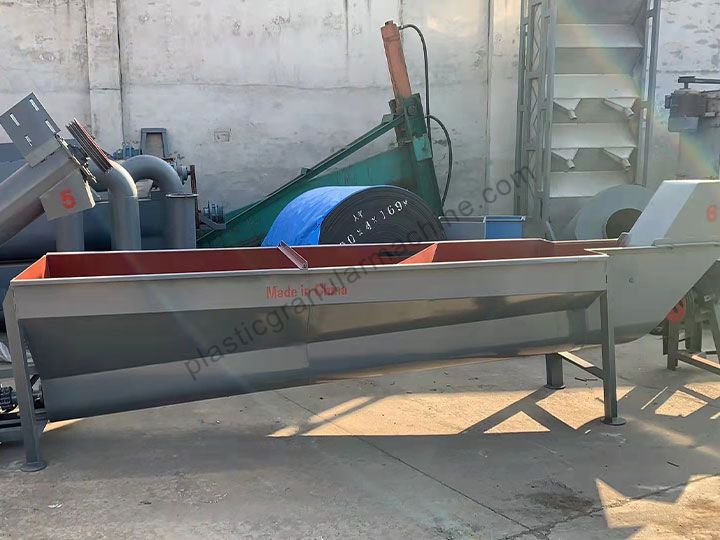
1. الأتمتة العالية تلغي الحاجة إلى الفرز اليدوي.
- مزود بجهاز ناقل يمكنه أتمتة نقل وتنظيف رقائق زجاجات PET بالكامل، مما يجعل العملية فعالة ومريحة.
- اعتمادًا على فرق الكثافة الفيزيائية، يمكنه إكمال فرز غمر PET وطفو PP/PE تلقائيًا دون تدخل بشري، مما يجعل عملية الفرز أكثر استقرارًا وتوفيرًا للعمالة.
2. التحكم الدقيق في نظام تدفق المياه يضمن الفصل الدقيق.
- يعتمد تصميم مستوى الماء الثابت وبنية التدفق البطيء لمنع الاضطراب في الماء من التأثير على الفصل.
- الستارة القابلة للتعديل وبنية الدفع الحلزونية تتحكم في وقت إقامة المواد لتحسين كفاءة الفصل.
- يتكيف النظام مع رقائق الزجاجات ذات السماكات وأحجام الجسيمات المختلفة، مما يفصل بفعالية الشوائب الخفيفة والعائمة، مثل PE/PP.
3. التنظيف الفعال يزيل البقع الصعبة.
- خزان فصل العوامة للغسيل لإعادة تدوير زجاجات PET مزود بجهاز تنظيف بالرش يقوم بشطف رقائق الزجاجات مرة ثانية خلال عملية الفصل ويزيل بفعالية الملصقات والمواد اللاصقة المتبقية.
- رقائق الزجاجات الناتجة أكثر من 98% نقية، مما يقلل بشكل كبير من الحاجة إلى إعادة التنظيف وإعادة الفرز.
- تضمن رقائق زجاجات PET الناتجة تلبية معايير المواد الغذائية أو معايير الألياف أو معايير المواد عالية الجودة لعملية التكوير وزيادة السعر في السوق.
4. تصميم هيكلي بسيط لسهولة الصيانة والتكامل.
- التصميم الهيكلي البسيط يجعل من السهل صيانته ودمجه.
- تتكون الغسالة بالكامل من الفولاذ المقاوم للصدأ، الذي يقاوم التآكل وسهل التنظيف.
- يمكن تكوينها بشكل مرن في خطوط إعادة تدوير زجاجات PET الجديدة أو الموجودة لتحقيق تكامل سلس وإنتاج سريع.
- يدعم السعة المخصصة وارتفاع النقل لتلبية احتياجاتك.
5. تصميم إعادة تدوير المياه، موفر للطاقة.
يستخدم نظام فصل البلاستيك العائم في الحوض تصميم إعادة تدوير المياه ورشها للحفاظ على المياه بشكل فعال. كما يساعد التصميم الموفر للطاقة في تجنب استهلاك الطاقة.
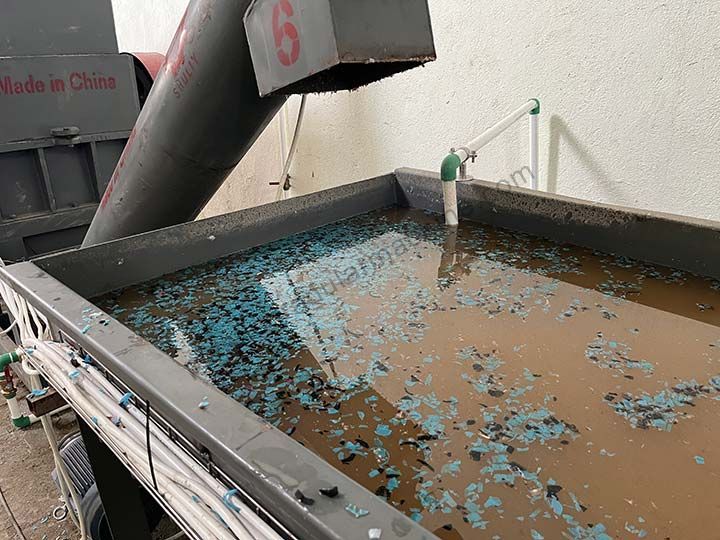
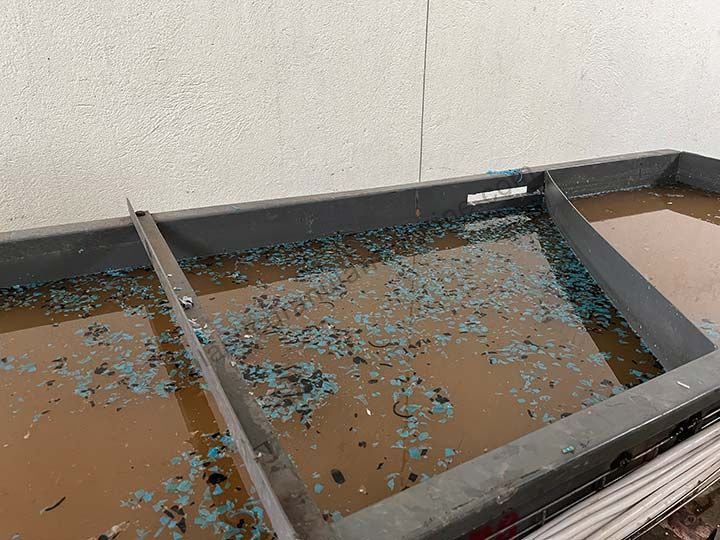
الاستخدام الواسع لآلة غسل رقائق PET لدينا
خزان فصل العوامة البلاستيكية لدينا يُستخدم على نطاق واسع في خطوط إعادة التدوير لزجاجات المياه، والتغليف بعد الاستهلاك، ونفايات PET الصناعية. يضمن نظافة ونقاء عاليين - مثالي لإنتاج rPET الغذائي، وألياف البوليستر، والألواح البلاستيكية.
كيف يمكن تحسين قيمة رقائق rPET؟
المفتاح هو الحصول على رقائق أنظف وأكثر نقاءً. عن طريق إضافة خزان فصل الطفو بالغمر، وآلة غسيل رقائق PET الساخنة، وأنظمة تجفيف فعالة، يمكنك إزالة الأغطية والملصقات والغراء والأوساخ، مما يجعل رقائق rPET الخاصة بك مناسبة للتطبيقات الراقية ويزيد من سعرها في السوق.
إذا كنت ترغب في تحسين نقاء وجودة إعادة تدوير زجاجات PET الخاصة بك، فلا تتردد في الاتصال بنا!
